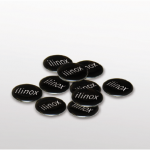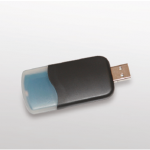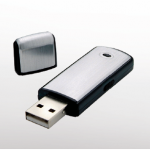
The Cabinet Gets Smart RFID–IMS
The radiofrequency identification (RFID, Radio Frequency IDentification)
This technology permits automatic identification and data gathering through the radio frequency. The hallmark of this technology is the capability of pooling an unambiguous identifier and other information with any object via a micro chip as well as the capability of allowing its read-out by a wireless device. When associated with a database or a communication network like the internet, this technology represents a most effective means to provide new services and applications that can be useful for process optimization.
RFID applications must be considered the entrance to a new stage of the information development.
Usable in different sectors as well as in various industrial areas.
– Construction & Engineering
– Facilities Management
– Aviation & Public Transport
– Manifacturing & Logistics
– LCM Services
In this specific case, we take into consideration the RFID implementation on electric cabinets, by developing an application that envisages the use of an UMPC (Ultra Mobile PC).
The cabinet gets smart: Ilinox Mobile System
The RFID IMS system is comprised of three elements: one or several RFID labels (or tag or Transponder), a reading and/or writing set (reader) and an information system for data management and transfer to and from the readers and for the association of the related documents to a filing system, to have constant availability of all the information.
GENERALITIES
Control board plate data
TECHNICAL DOCUMENTS
Wiring diagram
List of components
Set up cards
MANUALS
Use manual
Maintenance manual
Spare parts manual
MAINTENANCE
Routine maintenance
Preventative maintenance
Troubles List
TESTS
Test Schedule
DOCUMENTS UNDER SAFETY REGULATIONS
Declaration of Conformity
Risk analysis
ADDITIONAL DOCUMENTS
Plant layout
…………
DESCRIPTION OF THE SYSTEM
The IMS system finds its ideal application on the cabinets onboard machinery, which generally control complex plants and/or machines, although it can be used on any type of control board, including small cabinets, lecterns and control boxes.
Inside all compositions of cabinets, Ilinox sets a passive tag where the following information have been stored:
– Product ID code,
– Marking code
– Number of job ticket.
The manufacturer, in turn, has some fields available where he can store:
– Control board serial number
– Customer
– Delivery date
– Checker
– Code of Declaration of Conformity to the regulations
– Code of Declaration of Conformity
– Code of plate data card
– Individual tests card
– Component list schedule
– Code of wiring diagram
– Code of scheduled maintenance card
– Code of manuals
– Code of set up cards
The end-user, too, has a field available inside which he can store:
– End-user code
The tag can hold 225 alphanumerical records memorized, freely subdivided among the various fields.
The data are previously stored through the management information system (software), resident on the USB key; the user can visualize on the counter, in real time, the number of records input then, approaching the tag with the read/write unit inserted into a USB port of the UMPC/PC, he can transfer them.
The software will combine the RFID with a series of folders inside which the related documents will be stored, for instance:
– Technical documents (wiring diagrams, software)
– Use and maintenance manual
– List of spare parts
– Training documents,
– Troubleshooting Video and animation
– ……………………
These can be any format of documents (PDF, XLS, DOC, DWG, JPG, ……..), but visualization is only possible provided the software that may permit their opening is installed on the UMP/PC being used.
Therefore, as a RFID (read-out) is identified, all the related documents will be available immediately.
The 8 GB key permits storage of the data covering an indefinite number of RFID, until there is no more space available; this depends on the size of the enclosures.
RFID
Electronic device formed by a chip and a resonant coil, wired and immerged in a substrate which supports them.
The chip (few mm in size) is the “smart” element, inside which the data are stored, while the resonant coil is the signal transmission circuit.
• Passive Tag
• Diameter 30 mm thickness 2,6 mm
• Material: Epoxy PVC
• Frequency of the device: 13.56 MHz
• Memory: 1024 Bit, EEPROM Read/Write
• Access time: <100 ms
• Serial No.: unique, 64 bit
• Numbero of write cycles: 100.000
• Minimum time of data preservation: minimum 10 years
• Operating temperature: -25°C a +85°C
READ/WRITE UNIT
This unit permits, via a USB port of a MPC/PC, to read and write the RFID; it supports the interaction with the tags operating at 13.56 MHz. and complying with the ISO 15693 – ISO 14443AB – NXP Mifare family – NXP I-Code SLI standards.
• Read distance: 5 mm.
• Interface: USB
• Dimensions: 84 x 35 x 9 mm.
• Integrated aerial
• Signals: 1 bicolour LED
• Operating temperature: -20°C +50°C
MANAGEMENT INFORMATION SYSTEM
The management information system (software), which takes approx. 100 MB, is resident permanently on a 8 GB USB key where all the documents associated with each RFID can be stored.
After installing the software, the key can be used on any UMPC/PC featuring at least the following configuration:
• Operating system: Windows XP, Windows Vista o Windows 7
• Software installed: all the programs fit for reading the files of the RFID-connected documents
• USB ports: minimum 2, spaced at least 30mm from each other





